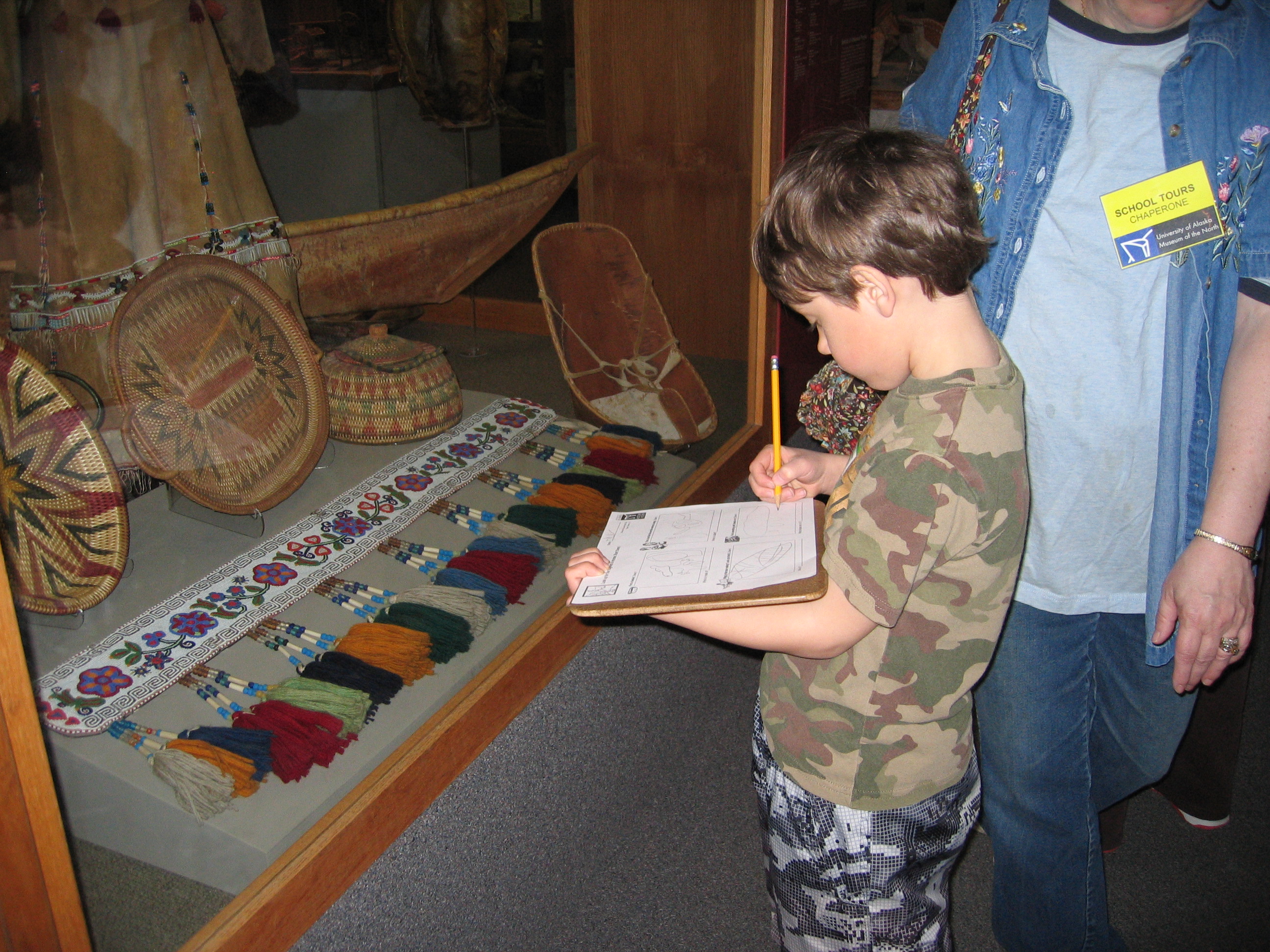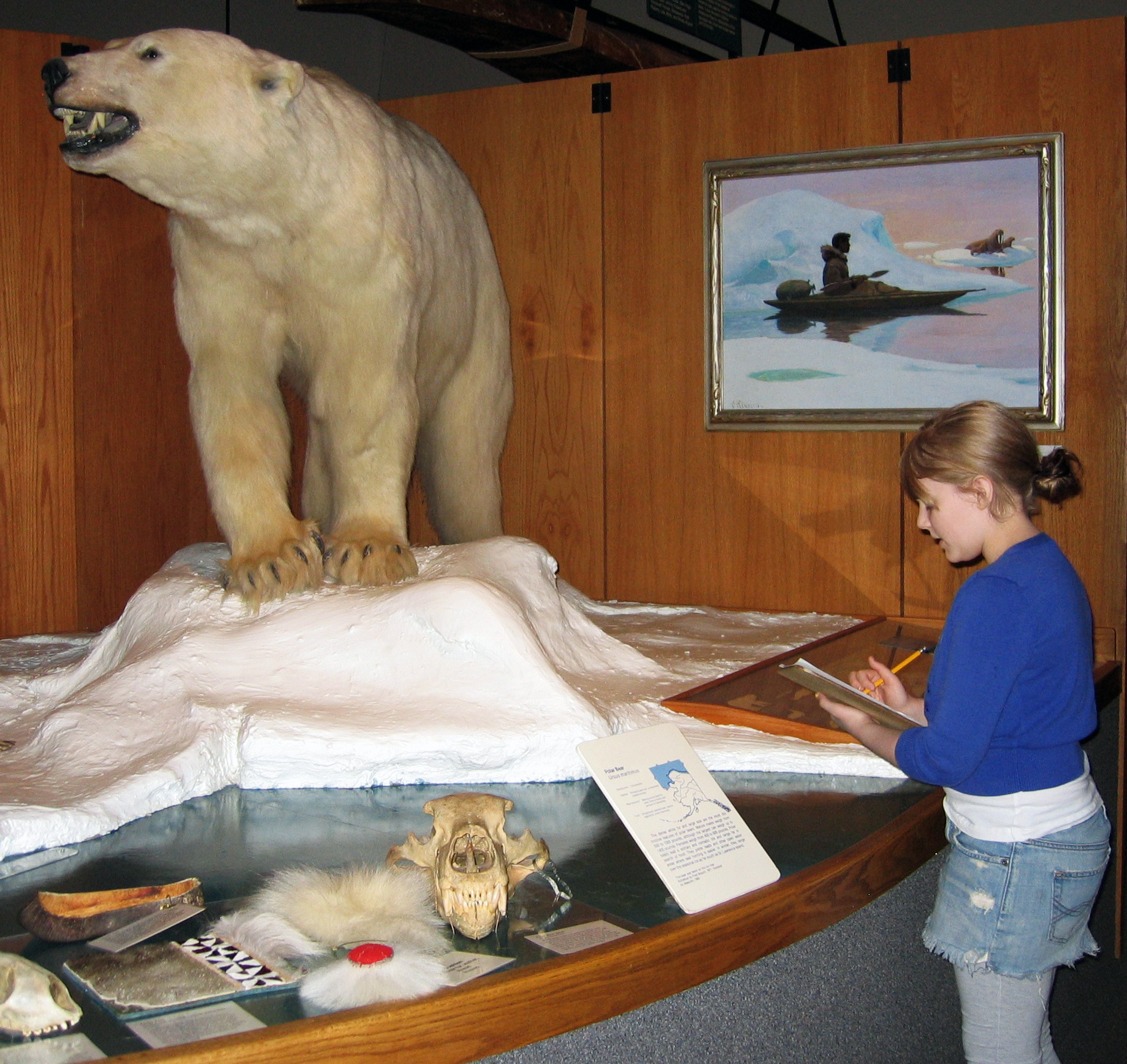Back to school means museum field trips
August 11, 2015
Theresa Bakker
907-474-6941
As jeweled fireweed blossoms fade into fluffy white tufts and the nights get longer
in the Interior, our thoughts turn to that age-old ritual: back to school. Soon kids
will be moving into new classrooms and plotting their book reports and science fair
projects for the school year.

But not all learning happens inside our schools. Educators have long known that students learn in different ways. It pays to get kids out of the classroom and into museums and learning centers across the community—places like the University of Alaska Museum of the North—where they can be exposed to a mix of hands-on objects, storytelling and activities.
Since 1981, the museum has been planning, scheduling and hosting a variety of guided school tours. These excursions help educators match learning outcomes with classroom objectives. Last year, more than 4,500 area students from kindergarten to high school visited the museum to explore exhibits with their teachers or take part in a guided Directed Discovery.
Those are made possible by a core of volunteers who serve as docents. They are a major strength of the program, said Jennifer Arseneau, the museum’s education and public programs manager.
“These dedicated volunteers have a passion for learning and sharing the joy of discovery with kids,” she said. “It’s a real pleasure to work with them and see the unique assets each docent brings to the program. The interaction with multiple docents makes our program unique. Kids interact with several adults, all passionate about museums and discovery.”
Almost 400 Fairbanksans have been museum docents over the years, including Charley Basham. She and her husband Lynn are both docents. They have a shared passion for education. Their relationship began during training for the Peace Corps as English teachers in the Philippines. They went on to teach together in Japan, the Navajo Reservation, in California and now in Alaska.
Basham said the museum is a unique backdrop for learning. “It provides an opportunity for children to physically explore their world. Our job as docents is not so much to tell them things as to pique their curiosity, encourage them to observe and ask questions.”
Think of the museum as a permanent scavenger hunt. You can look through the galleries for different examples of masks. Or try to find all the mammals in the museum, whether they are mounted creatures or used in materials like coats and blankets.

“The museum is a treasure trove,” Basham said. “It’s unlikely a child would have the opportunity to see a live polar bear up close and observe its paws, its teeth, its fur. They can see the animal and consider where it lives and what it eats.”
People with a variety of interests and backgrounds have joined the docent team. Right now, the museum is getting ready to train the next crew. All it takes is a commitment and participation in one of two yearly training sessions. And then the adventure begins. You never know what might happen on a field trip, Basham said.
“One day I was with a third grade class doing the art program. For one activity, the kids are free to roam the Rose Berry Alaska Art Gallery and find an object to draw or write about. I found two girls on the floor in front of an abstract artwork by Alfred Skondovitch saying how much they loved the painting.
“When I asked what they loved about it, one girl said, ‘Our teacher tells us we have to color in the lines, but he doesn't!’”
The museum is currently recruiting volunteers for this year’s docent program. No experience is necessary. Docents work with a team to guide field trips for grades kindergarten through sixth. The commitment is at least three hours, one day a week for a full semester, Arseneau said. “Our training prepares our volunteers to use exhibits and hands-on objects to share the science, culture and art of Alaska with students.”
This year’s training takes place weekday mornings Sept. 8-18. Email UA-museumlearn@alaska.edu to register or for more information.


